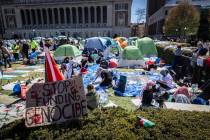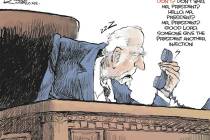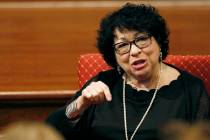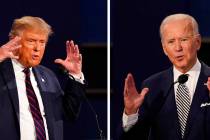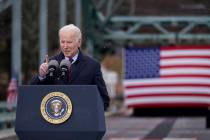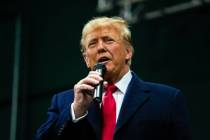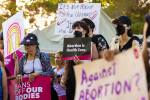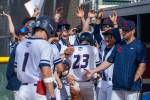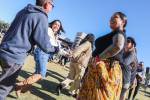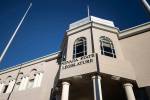Kit Carson: The legend in the closet
He’s an unlikely American hero, especially in the modern sense.
Standing only 5 feet 4 inches tall, he walked bow-legged, slept most of his nights outdoors with a loaded rifle, couldn’t read or write and killed “savages” as needed. Some say more than needed.
So, when Nevadans gather in black gowns and tuxedos to clink champagne glasses and celebrate the state’s 150th birthday on Oct. 31, 2014, Christopher Houston Carson will be the historical luminary most likely to make the politically sensitive gag on their bacon-wrapped weenie hors d’oeuvres.
Go figure. Modern Nevada touts gambling, legal prostitution, art entitled “Nudes On Ice” and a museum for mobsters, but then seems to treat the state’s capital city namesake like a family skeleton.
It was the age of Manifest Destiny when Kit Carson set foot in the Great Basin in 1843, leading John C. Fremont’s second expedition across Nevada, south from Pyramid Lake and into the Sierra Nevada. The mission better mapped a route to Oregon, sparking a big migration west, including Mormons to Salt Lake.
As Fremont made his way home to Washington, D.C., he and Carson trekked down California’s central valley and cut across, into Nevada and the springs called Las Vegas. Somewhere in the Mojave, they came upon Andreas Fuentes and an 11-year-old boy who had been ambushed by an unknown tribe of indians. The attackers stole 30 horses, killed two men and captured two women who were staked to the ground, mutilated and killed.
Hearing the details of the attack, Kit Carson and fellow mountain man Alex Godey set about to avenge the deaths.
In two days, they brought the horses back to Fuentes with the scalps of two dead indians on a pole.
When Fremont recounted this story in his official report, the legend of Kit Carson, hero avenger, was born.
In a later expedition not so celebrated, Fremont and Carson were attacked as they slept near Klamath Lake. Three in Fremont’s party were killed.
In retribution, Fremont and Carson attacked several Klamath encampments, killing dozens. The Klamaths said it was a massacre of women and children. To this day, the Klamaths do not kindly remember the name of Kit Carson.
Don’t expect a museum about that in Nevada anytime soon.
But there is a statue of Kit Carson tucked away on the legislative grounds in Carson City. Whoever wrote the inscription seemed to struggle with how closely to associate with the mountain man. It makes a point to tell readers that Carson City wasn’t really named after Kit Carson, but after the Carson River, which Fremont named in honor of Kit Carson. It’s an odd distinction to make on a man’s statue, as if some kind of separation is required in commemorating him.
My sensitivities aside, it’s a drop-dead beautiful work of public art. I recommend all Nevadans make it a point to visit it.
I also recommend the book “Blood and Thunder” by Hampton Sides. It tackles the early exploration of the West and puts the life and times of Kit Carson into unblinking perspective. The book inspired this column.
As Sides writes: “By the macabre distinctions of his day, he was regarded not as an Indian killer but as an Indian-fighter — which was, if not a noble American profession, at least a venerable one. But Carson did not hate Indians, certainly not in any sort of abstract racial sense. He was no Custer, no Sheridan, no Andrew Jackson. If he had killed Native Americans, he had also befriended them, loved them, buried them, even married them. Through much of his life, he lived more like an Indian than a white man.”
Kit Carson died a general — the only illiterate general in the U.S. Army’s history. He spoke English, Spanish and French fluently and could converse in Navajo, Ute-Comanche, Cheyenne, Arapaho, Crow, Blackfoot, Shoshone and Paiute.
His life and times embodied the spirit of the West — both in its majesty and in its brutality. He’s worth remembering in full.
Sherman Frederick, former publisher of the Las Vegas Review-Journal and member of the Nevada Newspaper Hall of Fame, writes a column for Stephens Media. Read his blog at www.reviewjournal.com/columns-blogs/sherman-frederick.








